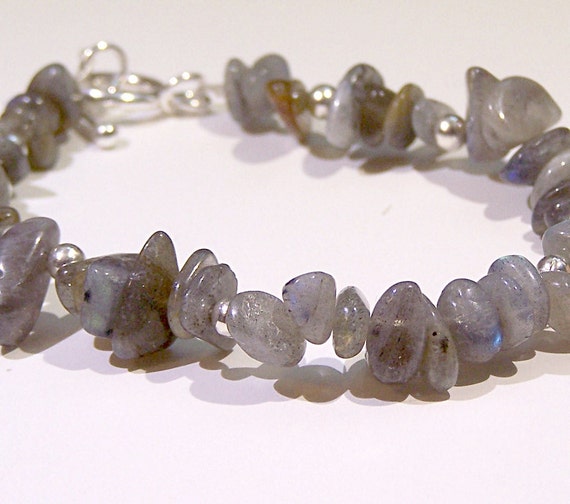 |
| Labradorite chips |
At first glance, it's kind of a dull gray rock. What makes labradorite interesting is the colorful sheen (called "schiller" or "labradoresence") it picks up when light hits it at just the right angle. Schiller is caused by the play of light against lattice distortions of high- and low-levels of calcium plagioclase phases. The light gets bounced around different layers and lattices like a ping pong ball, and the result of all that reflection and refraction is a rainbow shimmer.
Before labradorite was labradorite, it was known to the Eskimo Inuit and the Innu as "fire stone." They used a powdered form as a health tonic; it was also heavily associated with the aurora borealis. The stone was "discovered" by Europeans in the 1770s and it's been called labradorite ever since.
Because of labradorite's schiller, I think labradorite is a gem best left to be featured on its own. Matching it with other stones can be tough.
 |
| Pi Bracelet in Labradorite |

No comments:
Post a Comment